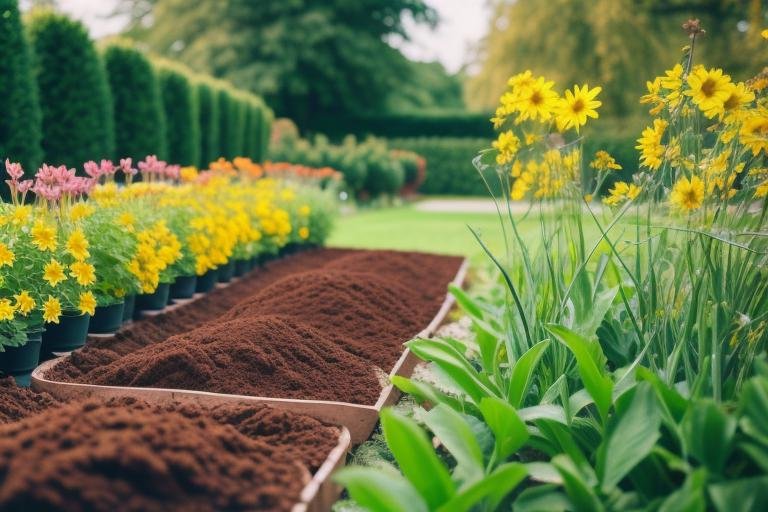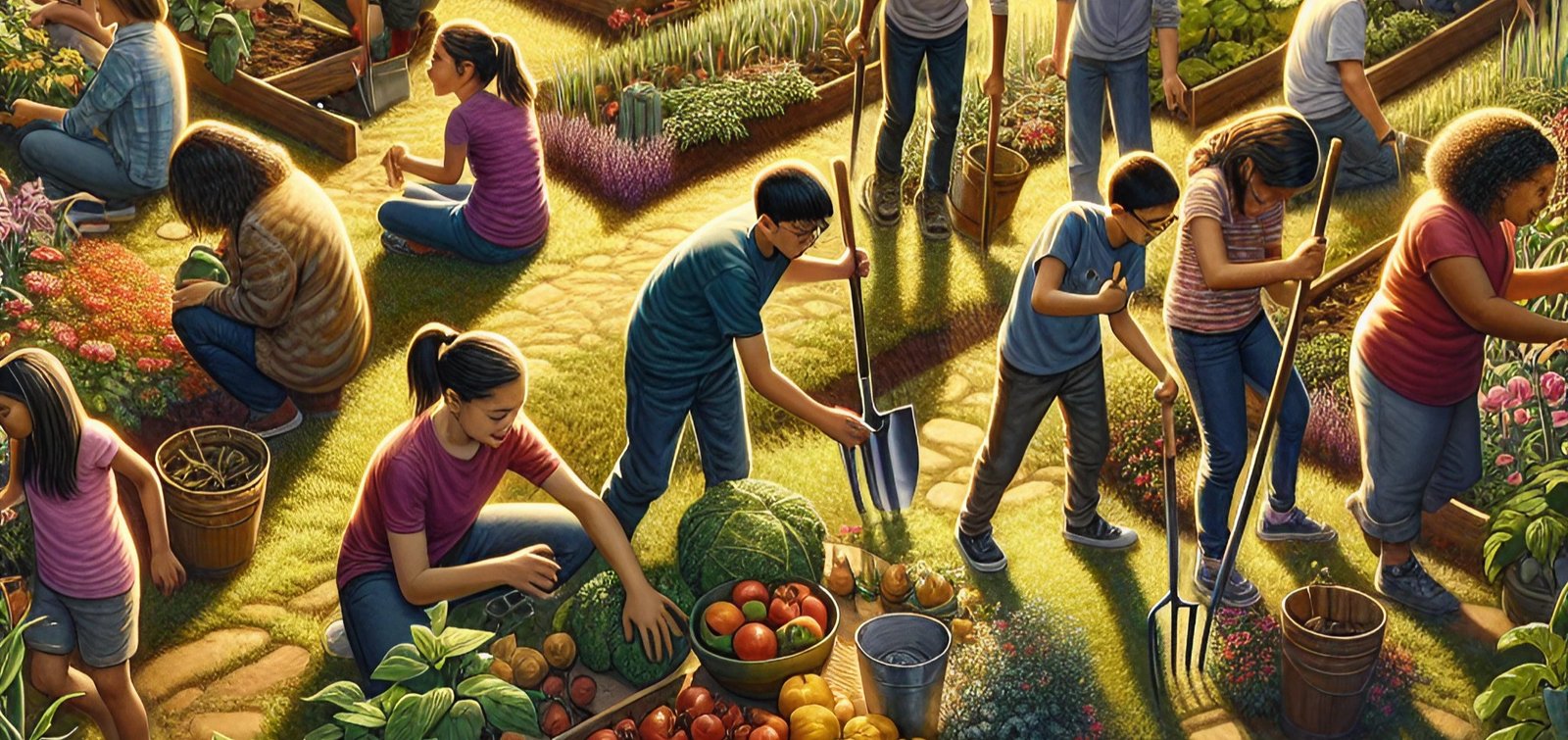In an increasingly digital world where students spend more time in front of screens than ever there is a growing need to reconnect with the natural environment. The Importance of Gardening for Students provides the perfect solution offering an enriching and hands-on experience that fosters both personal and academic growth. Gardening is not just about putting seeds in the ground and waiting for plants to grow. It is a life skill that promotes responsibility environmental stewardship creativity and teamwork.
Incorporating Gardening into students lives can have far-reaching impacts inside and outside the classroom. Schools parents and communities are recognizing the multiple benefits of Gardening for students using it as a tool for building stronger ties to nature while encouraging physical activity emotional well-being and a broader understanding of environmental issues.
Why Gardening is Essential for Students
Hands-On Learning for Enhanced Academic Achievement
At its core Gardening is a multidisciplinary activity that offers students a chance to apply what they have learned in the classroom to the real world. Whether it is biology chemistry mathematics or even art Gardening allows students to engage with these subjects in a tangible interactive way.
- Science and Biology: When students participate in Gardening they participate in a living laboratory. From understanding plant life cycles to learning about photosynthesis soil composition and ecosystems Gardening gives students a deep dive into biology in an informative and engaging way. Watching how a seed transforms into a plant under the right conditions helps students understand life processes firsthand.
- Mathematics and Measurement: Gardening offers endless opportunities for students to practice mathematics in real-life settings. For instance students can measure plant growth over time calculate how much water is needed for optimal growth and determine the spacing required for different plants in the garden. These practical applications make math easier to understand and more enjoyable.
- Environmental Science: By Gardening students see sustainability and ecological responsibility firsthand. Lessons on composting recycling and organic farming practices introduce them to critical concepts for addressing climate change and maintaining biodiversity. Through Gardening students learn how human actions can positively impact the environment.
- Art and Creativity: Gardening is also an opportunity for artistic expression. Whether designing the gardens layout creating garden markers or incorporating natural elements into art projects students are encouraged to use their creativity. Plant colors shapes and textures inspire a wide range of artistic endeavors.
Gardening as a Tool for Social and Emotional Development
Beyond its academic benefits Gardening is a powerful social and emotional development tool. In a school setting it can be a group activity that fosters collaboration communication and responsibility.
- Teamwork and Collaboration: In many school gardening programs students work together to plant tend and harvest crops. This requires them to share responsibilities make joint decisions and communicate effectively. Such experiences help students develop critical social skills they can apply in other areas.
- Responsibility and Patience: Gardening teaches students valuable life lessons in responsibility and patience. A garden requires consistent care and attention from watering plants to weeding and pest control. The results take time to show up helping students understand the value of patience and the benefits of sticking with something even when it gets tricky.
- Emotional Well-being: Research has shown that spending time in nature positively impacts mental health. Gardening provides a peaceful and mindful activity that can help reduce stress anxiety and depression. Gardening offers a calming escape for students who may feel overwhelmed by academic pressures.
Gardening and Physical Health: A Holistic Approach to Well-being
Incorporating Gardening into students routines offers a unique way to stay physically active without the pressure of structured exercise. Gardening activities engage multiple muscle groups and provide a full-body workout making it an excellent way for students to keep fit.
- Physical Fitness: Digging planting and weeding require strength endurance and coordination. Gardening exercises often mimic movements in traditional workouts such as squatting lifting and bending. This helps students improve their physical Fitness while also learning valuable skills.
- Connection to Nature: Many students spend most of their time indoors particularly in urban environments with limited green spaces. Gardening allows students to connect with nature breathe fresh air and enjoy the outdoors essential for mental and physical well-being.
- Reducing Sedentary Behavior: Students often spend excessive time sitting and engaging with screens in todays digital age. Gardening is a fantastic way to get students outside moving and actively engaging in a productive task. Gardening contributes to a healthier student lifestyle by decreasing screen time and increasing outdoor activity.
Table: Academic and Personal Benefits of Gardening for Students
| Category | Benefits |
|---|---|
| Academic Development | Hands-on learning in biology math and environmental science. |
| Social Skills | Promotes teamwork collaboration and responsibility through shared tasks and decision-making. |
| Physical Fitness | Engages multiple muscle groups improves coordination and offers a full-body workout. |
| Emotional Well-being | Reduces stress and anxiety providing a calming mindful activity that fosters emotional growth. |
| Creativity | Encourages artistic expression through garden design layout and DIY projects. |
| Environmental Awareness | Teaches sustainability practices such as composting recycling and water conservation. |
Gardening Teaches Responsibility and Leadership

Gardening instills a sense of responsibility in students. Whether in charge of a single plant or an entire garden plot students must take ownership of the care and maintenance of their plants. This hands-on responsibility teaches students valuable lessons about accountability and leadership.
- Nurturing Life: There is something deeply satisfying about watching a plant grow and flourish under your care. This experience fosters a sense of pride and accomplishment in students reinforcing that their efforts have tangible positive outcomes.
- Leadership Roles: In some school gardening programs students may have the opportunity to take on leadership roles. For instance older students could help younger students learn how to garden or a group leader might make sure that everyone finishes their tasks on schedule.These experiences help develop leadership qualities essential in academic and personal life.
Gardening and Environmental Stewardship: Building a Greener Future
As more people worldwide focus on the effects of climate change and how to take care of our environment students must learn how they can help protect the planet. Gardening is an excellent way for them to understand this responsibility as it promotes friendly practices for the Earth.Sustainability and Conservation: Gardening teaches students the importance of sustainable practices such as composting using organic materials and conserving water. These practices not only help the garden thrive but also reduce the gardens impact on the environment.
- Waste Reduction: Gardening teaches students how to turn natural waste like leaves grass clippings and food scraps into something useful—compost. This helps reduce the trash we send to landfills while creating a rich soil booster that keeps gardens healthy and vibrant.
- Water Conservation: Water is a critical resource in Gardening and students learn to use it wisely. From rainwater harvesting to installing drip irrigation systems Gardening teaches students how to conserve water make sure plants get the water they need without wasting any.
If you want more ideas on building a cost-effective garden or greenhouse visit this comprehensive guide: Growing Green for Less: The Ultimate Guide to Building Your Own Low-Cost Greenhouse.
Eco-Friendly Gardening Practices

| Practice | Description |
|---|---|
| Composting | Reduces waste by turning organic materials into nutrient-rich compost for garden use. |
| Water Conservation | Utilizes techniques such as rainwater harvesting and drip irrigation to minimize water usage. |
| Organic Gardening | Avoids synthetic fertilizers and pesticides promoting a healthier ecosystem and soil quality. |
| Recycling | Encourages using recycled materials for garden containersl structures and decorations. |
Fostering Creativity through Garden Design and DIY Projects
Gardening is an inherently creative activity allowing students to express creativity through design plant selection and DIY projects. Students can experiment with different plant combinations garden layouts and even create handmade decorations to enhance their gardening space.
- Garden Layout: Designing a garden involves both creativity and practical thinking. Students can arrange their plants in a way that is not only visually appealing but also functional. For example placing plants that require more sunlight in one area and shade-tolerant plants in another teaches students about garden planning and plant needs.
- DIY Projects: Gardening often inspires various DIY projects from crafting birdhouses and garden markers to creating planters from recycled materials. These projects encourage students to think outside the box and apply creativity to solve problems and beautify their environment.
Gardening Programs in Schools: A Growing Trend
With all the benefits gardening provides it is no surprise that many schools are incorporating gardening programs into their curriculums. These programs teach academic subjects and give students the skills to grow food care for the environment and live healthier lives.
- School Gardening Clubs: Many chools have started gardening clubs that allow students to work on garden projects after school. These clubs often involve students in all aspects of Gardening from planting to harvesting and even selling their produce at school events or farmers markets.
- Curriculum Integration: Some schools are integrating Gardening directly into their curriculum. For example science teachers might use the garden to teach lessons on plant biology while math teachers use it to demonstrate measurements and data collection. These interdisciplinary connections help reinforce students learning meaningfully and practically.
- Community Gardens: Some schools have partnered with community organizations to create larger-scale community gardens. These gardens unite students teachers parents and local residents to work toward a common goal: creating a green space that benefits everyone. Community gardens offer a valuable opportunity for students to engage with their community and positively impact their local environment.
Conclusion: Growing More Than Just Plants
Gardening offers many student benefits from academic achievement to social development and physical well-being. By allowing students to get their hands dirty and engage with the natural world Gardening fosters a deeper understanding of life sciences sustainability and the importance of environmental stewardship.
Moreover Gardening teaches essential life skills such as responsibility leadership and teamwork while promoting creativity and emotional well-being. Schools and communities that invest in gardening programs are growing plants and nurturing the next generation of environmentally conscious physically active and emotionally healthy individuals.
The importance of Gardening for students cannot be overstated in a world that is increasingly disconnected from nature. As they plant and watch them grow students also plant the seeds of knowledge responsibility and a lifelong connection to the natural world.
FAQs about the Importance of Gardening for Students

How can schools without access to land incorporate gardening programs?
Schools without outdoor space can utilize options such as container gardening or vertical gardens which can be set up in classrooms or on rooftops. Indoor hydroponic systems are another alternative allowing students to grow plants year round without needing soil.
What are some common plants that are easy for students to grow?
Some starter plants include radishes lettuce and herbs like basil and mint as they have a quick growth cycle and require minimal maintenance. These plants offer immediate results that help maintain student interest and motivation.
How do gardening programs accommodate different grade levels?
Gardening activities can be tailored to suit various age groups. Younger students might focus on primary plant care and simple observations. In comparison older students can engage in more complex projects such as designing garden layouts or conducting soil and water quality experiments.
Are there specific resources available to help implement a school gardening program?
Many organizations offer resources and grants for educational gardens such as the National Gardening Associations Kids Gardening programs or local community gardening organizations. These resources provide guidance financial support and materials to start and maintain a garden.
What are the challenges schools might face with gardening programs?
Common challenges include limited funding water access and maintaining the garden over school holidays. Solutions could involve seeking community partnerships or grants implementing water-saving techniques and involving the community or volunteers to help care for the garden during breaks.
Why is gardening important for students?
Gardening offers numerous benefits for students including enhanced academic learning emotional well-being physical fitness and the development of responsibility and teamwork. It also connects students with nature helping them understand sustainability and environmental stewardship.
How does gardening improve academic achievement?
Gardening is a hands-on learning tool that applies knowledge from biology environmental science mathematics and even art. Students can better understand scientific concepts such as photosynthesis ecosystems and plant life cycles by engaging in gardening activities while practicing measurement and problem-solving skills.
What are the emotional benefits of gardening for students?
Gardening helps reduce stress and anxiety and promotes emotional well-being by providing a peaceful and mindful activity. The nurturing of plants fosters patience and a sense of accomplishment boosting students self-esteem and resilience.
How does gardening promote physical health in students?
Gardening involves digging planting and weeding which engage multiple muscle groups improve coordination and offer a full-body workout. It is a natural way for students to stay active without the pressure of formal exercise.
Can gardening teach students responsibility and leadership?
Yes gardening teaches responsibility as students must care for their plants daily ensuring they receive water sunlight and care. It also encourages leadership skills through collaboration and team projects where students can take on leadership roles and guide others.
How does gardening help students understand environmental sustainability?
Gardening introduces students to eco-friendly practices such as composting recycling and water conservation. These activities teach them about the importance of sustainable living and how small actions can positively impact the environment.
What are the social benefits of gardening in schools?
Gardening promotes teamwork and communication as students work together on garden projects. It builds social bonds by encouraging collaboration and shared responsibility. These experiences help students develop more vital social skills and foster a sense of community.
How can schools integrate gardening into their curriculum?
Schools can integrate gardening into subjects like science math and environmental studies. Gardening clubs and after-school programs also provide opportunities for students to engage in gardening and community partnerships can create larger school or community gardens.
What creative opportunities does gardening offer for students?
Gardening encourages creativity in garden design plant selection and DIY projects. Students can experiment with different layouts and create garden decorations like recycled planters or hand-painted markers which foster artistic expression.
How does gardening reduce screen time for students?
Gardening offers a productive engaging outdoor activity that reduces students time on screens. It encourages students to disconnect from digital devices and focus on the natural world promoting a healthier more active lifestyle.
Can gardening help students learn about healthy eating?
Students who grow their own fruits and vegetables are more likely to understand the value of fresh healthy food. Gardening encourages more nutritious eating habits and teaches students where their food comes from promoting a greater appreciation for nutrition.
How can schools start a gardening program?
Schools can start a gardening program by identifying a suitable space for the garden involving students and staff in the planning process and seeking community support or funding.
